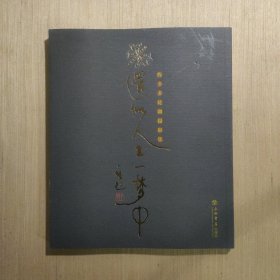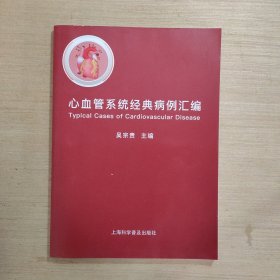
跨越语言的识解:翻译的认知语言学探索
实物拍照,所见即所得,无附带卡片之类。具体品看图,有问题留言。
¥ 60 八五品
仅1件
上海奉贤
认证卖家担保交易快速发货售后保障
作者谭业升 著
出版社上海外语教育出版社
出版时间2009-08
版次1
装帧平装
货号20-10-3
上书时间2024-12-21
- 店主推荐
- 最新上架
商品详情
- 品相描述:八五品
图书标准信息
- 作者 谭业升 著
- 出版社 上海外语教育出版社
- 出版时间 2009-08
- 版次 1
- ISBN 9787544613712
- 定价 22.00元
- 装帧 平装
- 开本 32开
- 纸张 胶版纸
- 页数 222页
- 字数 218千字
- 正文语种 简体中文
- 丛书 外教社博学文库
- 【内容简介】
-
《跨越语言的识解:翻译的认知语言学探索》是以认知语言学为视角对翻译现象进行的一项系统研究。它吸收了关联翻译论和翻译图示研究的成果,结合认知语言学的基本理论假设,创建了翻译中意义建构的认知模式。《跨越语言的识解:翻译的认知语言学探索》以“识解”作为文本对比分析的中介概念,刻画了具体翻译中涉及的多样化认知运作,并对若干翻译案例在系统描述的基础上结合三个认知原则进行了解释,模拟了翻译认知文本分析的框架。
《跨越语言的识解:翻译的认知语言学探索》内容丰富,例证翔实,对从事翻译教学和研究的教师、研究人员以及相关专业研究生都具有参考价值。 - 【目录】
-
Chapter1IntroductionandOverview
Chapter2TowardaCognitiveModelofMeaningConstructioninTranslation
2.1Introduction
2.2TwoCognitiveConstructivistApproachestoTranslation
2.2.1TheRelevancetheoryoftranslation
2.2.2ASchema-theoreticviewoftranslation
2.2.3CorrelationbetweentheRelevancetheoryoftranslationandtheSchema-theoreticviewoftranslation
2.2.4Anexplanatoryframe:Threecognitiveprinciplesgoverningtranslationinasequenceofpriority
2.3ACognitiveLinguisticViewofMeaningConstructionandTranslation
2.3.1Whatiscognitivelinguistics?
2.3.2Theinteractionbetweenlanguageandcognitioninmeaningconstructionintranslation
2.3.3Languageschemataredefinedandthesanctioningeffectsoflinguisticconventionsintranslation
2.3.4On-lineconstrualinlanguageuseandtranslation
2.4ACognitiveModelofMeaningConstructioninTranslation
Chapter3DomainConceptualizationandGroundConstrualinTranslation
3.1DomainConceptualizationandGroundConstrual
3.1.1Cognitivedomains
3.1.2Ground
3.2ConstrualandCognitiveAbilities
3.3ImageTransformation/ConstrualShifisinMeaningConstructionandtheImplicationsforTranslation
3.4TheMethodologyofInvestigatingTranslationalShiftsandVariations
3.4.1DescriptiveTranslationStudiesvs.PrescriptiveTranslationStudies
3.4.2ComparativeanalyticalmethodoftheDTS
3.5TranslationalShiftsandVariationsalongDifferentDimensionsofConstrual
3.5.1Base/profileorganization
3.5.2Levelofspecificity(abstraction)
3.5.3Subjectivityvs.objectivity
3.5.4Perspective
3.5.5Prominence:figure/groundorganization
3.5.6Interactionbetweendifferentconstrualoperations
3.6Summary
Chapter4ImageSchematic,MetonymicandMetaphoricalConstrualinTranslation
4.1ImageSchemaandImageSchematicTransformationsinTranslation
4.2MetonymicConstrualinTranslation
4.2.1Atraditionalviewofmetonymyandmetonymytranslation
4.2.2Metonymyincognitivelinguisticsandintranslation
4.2.3Interimsummary
4.3MetaphoricalConstrualinTranslation
4.3.1Abriefreviewofmetaphortranslationstudyinthepast
4.3.2Acognitivelinguisticviewofmetaphorandmetaphor
translation
CasestudyI:Strategiesofemotionalmetaphortranslation
Casestudy2:ThesystematicuseofheartmetaphorsinScarletLetter
anditsChinesetranslation
4.4Summary
Chapter5LanguageSchemata,PreferredConstrualPatterns,andCognitiveChangesinTranslation
5.1LanguageSchemataandPreferredConstrualPattems
5.2Image-Schema-BasedPreferredConstrualPatterns
5.3Figure/GroundConstrualandAnimacy
5.4TheSanctioningEffectsofPreferredConstrualPatternsinTranslation
Chapter6CognitiveStylesofTranslation
6.1Introduction:AFormulaofCognitiveStyle
6.2TheCoherenceofConstrualOperationsinFuDonghuasTranslationofGonewiththeWind
6.3MetaphoricalCoherenceinTessoftheDUrbervillesandItsTranslation
6.4TheCognitiveStylesofPoundandYipsChinesePoetryTranslation
6.4.1AcriticalreviewonthesyntacticanalysisofclassicalChinesepoetryanditstranslation
6.4.2PoundandYipsaestheticsofChinesepoetryanditstranslation
6.4.3ThecorrelationbetweenPoundandYipsaestheticprinciplesandconstrualoperations
6.4.4ThepreferredconstrualconfigurationofChinesepoeticsandPoundandYipscognitivestylesofChinesepoetrytranslation
6.4.5Thetransplantingissue
6.5Conclusion
Chapter7Conclusion
7.1MajorFindings.
7.2LimitationsandDirectionsforFutureStudy
Bibliography
Appendix:AglossaryinEnglishandChinese
点击展开
点击收起
— 没有更多了 —




















以下为对购买帮助不大的评价